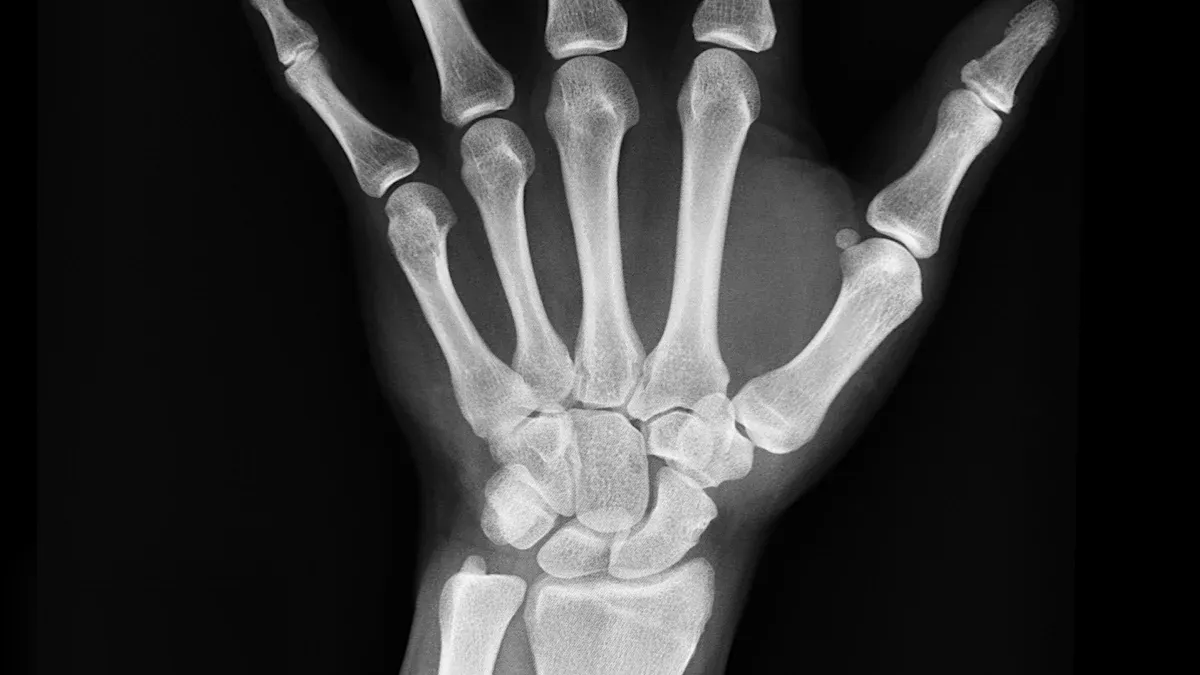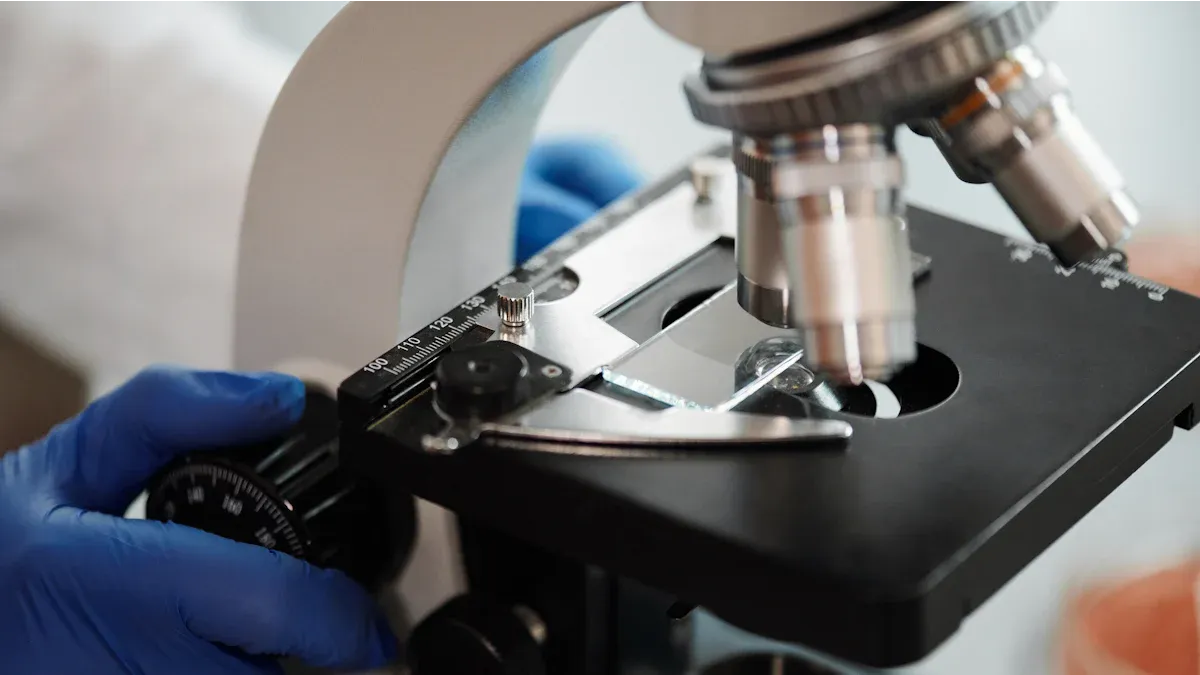How to Enhance Radiopacity in Nitinol Tubing for Medical Devices

When using medical devices, radiopacity enhancement in Nitinol tubing is crucial for visibility on an X-ray. This improvement allows doctors to easily spot nitinol tubing inside the body, making surgeries safer and more efficient. Research indicates that adding elements like erbium significantly contributes to radiopacity enhancement in Nitinol tubing, increasing visibility by up to 10% compared to platinum. This boost ensures better detection without compromising the strength or flexibility of the devices.
Key Takeaways
Radiopacity lets doctors see Nitinol tubing on X-rays. This makes surgeries safer and more exact. - Adding metals like platinum, tantalum, or bismuth helps doctors see the tubing better. These metals do not hurt the tubing’s strength or flexibility. - There are different ways to add radiopacity. These include markers, alloying, composite wires, and surface coatings. Each way has special benefits for different devices. - Testing radiopacity with standards and imaging checks if devices are safe and work well. - Picking the best method means thinking about visibility, flexibility, durability, and cost. This helps patients get the best results.
Radiopacity in Medical Devices

Why Radiopacity Matters
Doctors need to see medical devices clearly during surgery. Radiopacity lets them track nitinol tubing inside the body. Devices with high radiopacity show up better on x-rays. This helps doctors guide tools and avoid mistakes. Good radiopacity means safer and better treatments for patients.
Clinical studies prove radiopacity is important for medical use. For example:
A clinical trial tested a new radiopaque ethanol injection in six patients with venous malformations. Doctors could follow the injection using digital subtraction angiography, which showed better radiopacity.
After two months, four of the six patients had a full response. No serious side effects happened.
Animal studies had similar results, and organs were not harmed.
These results show radiopacity helps doctors see devices and treatments in real time. This leads to better results and fewer risks.
Many materials can make nitinol and other devices easier to see. The table below shows how different additives help devices show up during imaging:
Radiopaque Additive | Specific Gravity | Thermal Stability (°C) | Particle Size (μm) | Key Benefits and Impact on Visibility |
|---|---|---|---|---|
Barium sulfate | 4.5 | 300 | 0.5–2.0 | Low cost, stable, improves visibility without changing properties |
Bismuth compounds | 7.8–9.0 | 205–260 | 1–12 | Higher contrast, less needed, clearer images |
Tungsten | 19.3 | N/A | 1–2 | High radiopacity at low amounts, good for thin devices |
Tantalum | 16.6 | 300 | 0.1–5.0 | Better contrast for checking implants |
Clinical and Regulatory Needs
Medical device makers must follow strict rules. Regulators want proof that nitinol tubing and other devices are visible on imaging. Radiopacity testing uses standards like ASTM F640 and ISO 25539. Certified labs, such as those with ISO/IEC 17025, do these tests to check quality.
Tip: Testing with models of the body helps you check radiopacity in real-life situations.
Radiopacity is needed in many areas, like heart care, bone surgery, and dental work. You must balance clear images and safe radiation levels. Reports show radiopacity lets doctors track devices safely and correctly during surgery. The medical device industry depends on these rules to keep patients safe and devices working well.
Radiopacity Enhancement in Nitinol Tubing

Radiopaque Markers and Microfabrication
Radiopaque markers help doctors see nitinol tubing on X-rays. These markers use metals like gold, platinum, or tantalum. You can attach them with micro-riveting or micro-welding. This makes the tubing easier to see without changing how it bends. Doctors use these markers to guide devices safely during surgery.
Microfabrication is another way to make nitinol tubing more visible. You can use lasers or thin-film methods to add tiny patterns. These patterns help the tubing show up better than plain wire. Laser ablation and welding with tantalum make the tubing stronger and easier to see. Tantalum markers do not rust like other metals. Gold and platinum markers need a special coating to stop rust. Microfabrication can also help cells grow better on the device, making it safer for the body.
Note: Microfabrication lets you make special markers or patterns for things like MRI markers or smart stents.
Alloying and Composite Wire Technology
You can mix other metals into nitinol to make it show up better on X-rays. This is called alloying. Metals like platinum, palladium, tungsten, or tantalum work well. They have high atomic numbers, so they are easy to see. Studies show that mixing these metals with nitinol keeps the tubing strong and flexible.
Composite wire technology is another way to help. You can fill nitinol tubes with platinum or use layered wires. DFT® technology uses different metals together for the best results. Some wires have an iron shell and a molybdenum core. Tests show these wires keep their shape and are easy to see, even after use. Micro-CT scans prove composite wires are easier to see than plain nitinol wire.
Zinc coatings on stents reach a linear attenuation coefficient of μ = 6.2 ± 0.4 cm⁻¹, which is above the minimum for clinical use.
CoCr alloy stents set the standard with μ = 7.33 cm⁻¹.
316L stainless steel stents have poor radiopacity at μ = 2.91 cm⁻¹.
The best radiopacity comes from metals with an atomic number over 22.
You can pick alloying or composite wire technology when you need tubing that is both strong and easy to see.
Surface Coatings and High-Z Metals
Surface coatings are another way to make nitinol tubing easier to see. You can coat the tubing with metals like gold, platinum, zinc, or bismuth. These metals have high atomic numbers. They make the tubing much brighter on X-rays. For example, bismuth nanoparticle coatings with PHB on stents raise the Hounsfield Unit value from about 1500 to 4000. This means the tubing looks much brighter during scans.
Zinc coatings also help. They make the tubing 43% easier to see and stronger too. Tests show zinc-coated stents are harder to crush and lower the risk of blood clots. The coating process can make the surface rougher. This helps more metal stick to the tubing and gives a thicker layer. This makes the tubing last longer and show up better.
Tip: Surface coatings can make tubing stronger and easier to see, but you should check for changes in rust or blood safety.
You can use these coatings for many kinds of medical devices. They work for both permanent and dissolvable implants. Surface coatings and high-Z metals give you a good way to make nitinol tubing easier to see without changing how it works inside the body.
Impact on Properties
Mechanical Performance
Adding radiopaque markers or coatings changes how strong and bendy nitinol tubing is. Some coatings, like tantalum, make the surface harder. They help the tubing snap back after bending. This keeps the device strong when used. Composite wires, like Nitinol DFT® flat wire, also make the tubing easier to see. They do this while keeping it flexible. But some coatings, like tungsten, can make the tubing break more easily. You must pick the right method to keep the device safe and simple to use.
Here is a table that shows how different materials and their radiopaque elements affect radiopacity:
Material | Radiopaque Elements (Mean Atomic %) | Radiopacity Impact |
|---|---|---|
Prettau | Zirconium (16.34% ± 1.38) | Highest radiopacity due to high Zr content |
Vita Suprinity | Aluminum (0.81% ± 0.12), Zr (1.47%) | Moderate radiopacity influenced by Al and Zr |
Vita Enamic | Aluminum (4.82% ± 0.35) | Higher radiopacity linked to Al content |
Shofu | Aluminum (0.14% ± 0.1) | Lower radiopacity due to low Al content |
Pekkton | Aluminum (0.85% ± 0.07) | Moderate radiopacity |
BioHPP | Aluminum (0.22% ± 0.07) | Lowest radiopacity due to minimal Al content |
Tip: More radiopaque elements usually mean you can see the device better, but you also need to keep it strong and bendy.
Corrosion and Biocompatibility
You want your nitinol device to last in the body and not hurt anyone. Some coatings, like tantalum, make a smooth layer that stops nickel from leaking out. This helps stop allergies and makes the device safer. Tantalum coatings also help stop rust, especially if put on the right way. Tungsten coatings make the device bright on X-rays but can rust faster, so they may not always be best. Diamond-like carbon coatings can make the surface resist water, but they do not always stop rust unless they are thick and even.
Tantalum coatings stop nickel from leaking and make the device safer.
Tungsten coatings show up well on X-rays but can rust fast.
How you put on the coating changes how well it protects the device.
Manufacturing Considerations
When you make nitinol tubing easier to see, you need to think about how hard it is to make. New ways, like using Nitinol DFT® flat wire, help you get better radiopacity. They do this without making the tubing too stiff or hard to shape. These special wires let you make devices that are easy to see and still flexible. You might need special tools or extra steps to add coatings or markers. Working with experts can help you pick the best way to make your device and avoid problems.
Note: Always test your device after adding radiopacity features to make sure it is safe and works well.
Selecting the Right Method
Device Requirements
You must pick a radiopacity method that fits your device. Think about what kind of device you have and how big it is. Also, think about where it will go in the body. Guidewires need to be thin and bendy but still show up on X-rays. Thin coatings of platinum or tantalum help with this. These metals have high atomic numbers and work well for small devices.
When you pick a method, make sure it follows the rules. There are standards like ASTM F640-12 and ISO 25539-1 for radiopacity. You can check your device’s X-ray visibility by comparing it to aluminum step wedges. This helps you see if your device meets the rules.
Here are some tips for picking the best method:
Use metals with high atomic numbers for small devices.
Choose coatings or markers that keep nitinol flexible.
Make sure your method works with your nitinol production plan.
Check if your process matches your nitinol melting steps.
Tip: Always use digital imaging to test your device. This makes sure it meets both medical and rule needs.
Balancing Performance and Cost
You want your device to work well and not cost too much. Gold or platinum plating makes devices easy to see and last longer. But these metals cost more and need special tools. Other ways, like using fillers or polymers, cost less at first. But they may not last as long or keep the device as bendy.
Factor | Metal Plating | Alternative Methods (Fillers, Polymers) |
|---|---|---|
Initial Material Cost | High | Lower |
Processing Complexity | Specialized equipment needed | Simpler |
Durability and Longevity | High | May degrade faster |
Impact on Flexibility | Minimal | Can reduce flexibility |
Scalability | Limited | Easier to scale |
Long-term Cost-effectiveness | Favorable | May increase over time |
The medical field often picks metal plating for important devices. This is because it means fewer replacements and shorter surgeries. For less important uses, cheaper methods might be enough. Always think about how easy the device is to see, how strong it is, and how much it costs. This helps you make safe and good devices for patients.
There are many ways to make Nitinol tubing easier to see. You can add markers, mix in other metals, use composite wires, or put on special coatings. Each way works better for different devices. Pick the method that fits what your device needs and how you want it to work.
Talk to people who know a lot about materials and rules. They can help you follow safety rules and make your device better. First, test small pieces and look at the X-ray pictures. This helps you choose the best way for your project.
FAQ
What is radiopacity and why do you need it in Nitinol tubing?
Radiopacity means you can see the tubing on an X-ray. You need it so doctors can track the device inside your body. This helps them place the device safely and check its position during surgery.
Which metals make Nitinol tubing more visible on X-rays?
You can use metals like platinum, gold, tantalum, or bismuth. These metals have high atomic numbers. They help your tubing show up brighter on X-ray images.
Does adding radiopaque coatings change how strong the tubing is?
Some coatings can make your tubing harder or stronger. Others might make it more likely to break. You should always test your device after adding a coating to make sure it stays safe and flexible.
How do you test if your Nitinol tubing is radiopaque enough?
You can compare your tubing to an aluminum step wedge on an X-ray. This test shows if your device meets medical standards for visibility. Labs use this method to check quality.
Can you use radiopaque methods for all types of medical devices?
Yes, you can use these methods for many devices, like stents, guidewires, and implants. You should pick the method that fits your device’s size, shape, and use.
See Also
The Process Behind Producing Nitinol Tubing For Medicine
Ways Nitinol Tubing Is Transforming Modern Medical Equipment
Discovering Nitinol Tubing Uses Within Healthcare Technology Tools
Nitinol Tubing’s Impact On Progressing Medical Innovation Today
Reasons Nitinol Tubing Is Essential For Cutting-Edge Medicine

